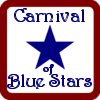Microsoft Case May Have Global Reach
 Seth Waxman, AT& T's lawyer at far left in glasses, approaches Microsoft lawyers Bradford Smith, center, and Theodore Olson. The case addresses whether Microsoft can be held liable for violating an AT& T patent.
Seth Waxman, AT& T's lawyer at far left in glasses, approaches Microsoft lawyers Bradford Smith, center, and Theodore Olson. The case addresses whether Microsoft can be held liable for violating an AT& T patent.
===============================================
As Microsoft Hit With $1.52B in Damages, on a case that the entire 'global corporate market ' watch and wait eagerly for the final verdict, in the 'Titanic Clash' between, 'Pro-Democrat and Pro-Republican Lawyers' in the US Supreme Court, in an indepth article "Court Takes on Software Patents", Washingtonpost unravels the inside trauma that haunts the 'Software Giant Microsoft', and the entire corporate world.
Read the Story and wish well.
Love and Peace.
BEST OF FUTURE
===============================================
Every move of the world's largest software maker, whose operating systems drive 90 percent of all PCs, sends ripples through the technology world.
The name alone -- Microsoft v. AT&T-- conjures a galactic showdown. And the legal battle over a patent dispute that unfolded in the Supreme Court yesterday brought together elements of an epic.
At issue is whether Microsoft can be held liable for violating an AT&T patent on technology that condenses speech into computer code, similar to that found on Microsoft's Windows program.
Microsoft admitted it infringed the AT&T patent on computers sold domestically but contends that it is not liable for its programs installed by computer manufacturers overseas.
In 1984, Congress amended the patent law to forbid companies from shipping components of patented inventions overseas and having the parts assembled elsewhere in an attempt to skirt patent laws.
The case has sparked intense interest among U.S. technology firms, especially software developers, who worry they could be left increasingly vulnerable for infringing patents if the ruling goes against Microsoft.
Even some of Microsoft's traditional competitors such as Yahoo and Amazon.com have joined to support the company's argument that overseas production should be governed by those countries' laws. At the time the statute was amended, global trade was far more limited and certainly did not include easily distributed computer and Internet transmissions.
The report quoted a lawyer for Yahoo as saying an unfavorable ruling for Microsoft could extend patent liability "to every corner of the world" where a copy of U.S.-developed software is used, including software downloaded over the Internet.
Seth P. Waxman, AT&T's lawyer and a former Clinton administration solicitor general, told justices they should uphold two lower courts' rulings in the company's favor, there being no dispute that Microsoft sends Windows code from the United States, via the "golden disk" or electronic transmission, to be installed in foreign computers.
But Microsoft's lawyer, former Bush administration solicitor general Theodore B. Olson, countered that the code is copied outside the United States and installed on computers overseas. Thus, U.S. patent laws don't apply, he said.
The justices wrestled with whether computer code would be patented or whether the code alone could be a component.
Waxman said code is "dynamic," in that it causes a computer to take action, while Olson said it was more like a blueprint. It can be used to produce exact copies that are not patent infringements, he said, like instructions for building a car or a mousetrap.
The court sought guidance from the current solicitor general's office, which largely supported Microsoft's position.
Assistant Solicitor General Daryl Joseffer said lower courts have interpreted U.S. patent law too broadly. And he said the government's view is that the component at issue would be the software with the code on it, not the code alone.
Assistant Solicitor General Daryl Joseffer said lower courts have interpreted U.S. patent law too broadly. And he said the government's view is that the component at issue would be the software with the code on it, not the code alone.
He compared it to a key and lock.
"A key has a series of ridges on it that enable it to open a lock," Joseffer said. "And that series of ridges can be denoted by a sequence of numbers, bigger numbers for deeper ridges. But the component is the key that actually turns the lock, not the abstract sequence of ridges on the key."
Eight justices will decide the case before July; Chief Justice John G. Roberts Jr. is recused because he owns Microsoft stock.
"A key has a series of ridges on it that enable it to open a lock," Joseffer said. "And that series of ridges can be denoted by a sequence of numbers, bigger numbers for deeper ridges. But the component is the key that actually turns the lock, not the abstract sequence of ridges on the key."
Eight justices will decide the case before July; Chief Justice John G. Roberts Jr. is recused because he owns Microsoft stock.




0 comments:
Post a Comment